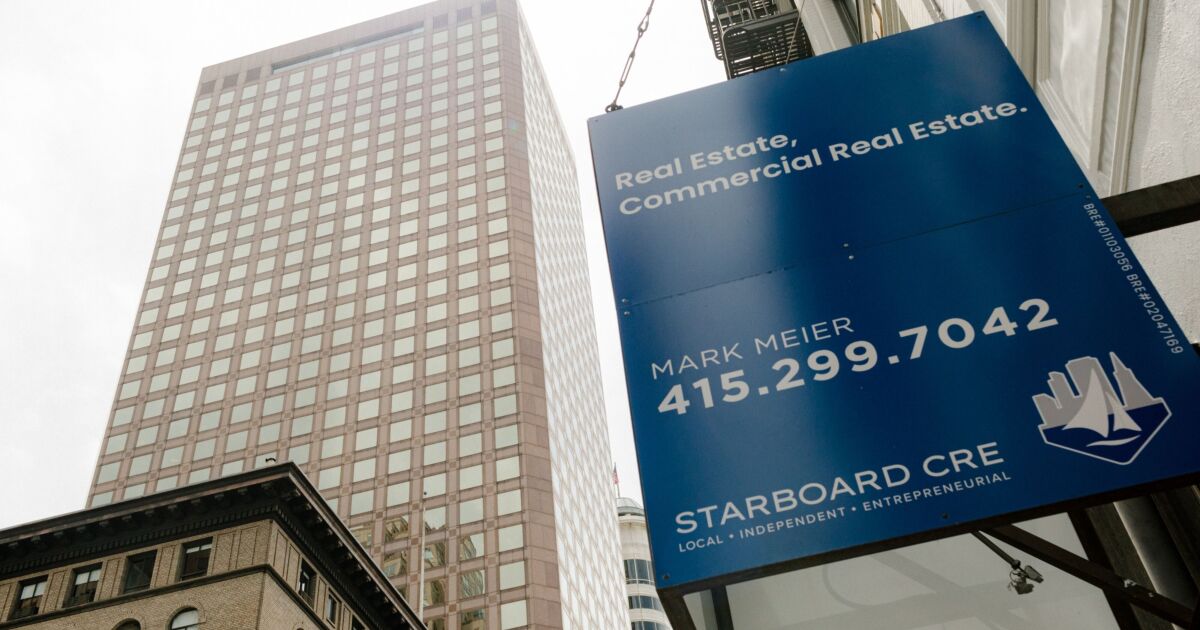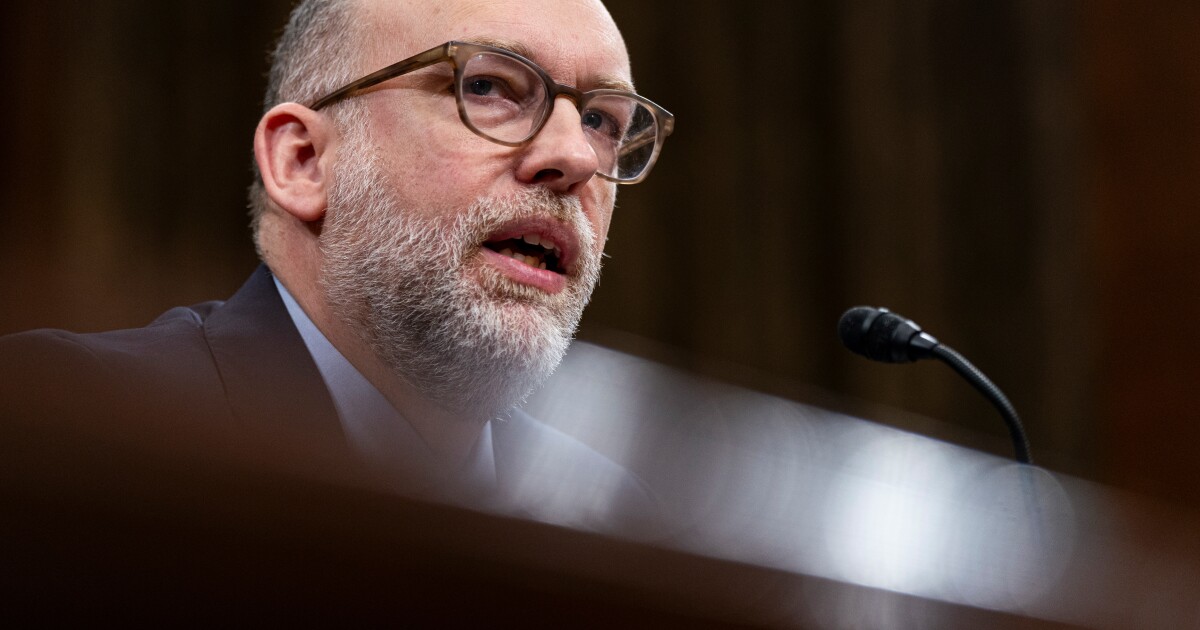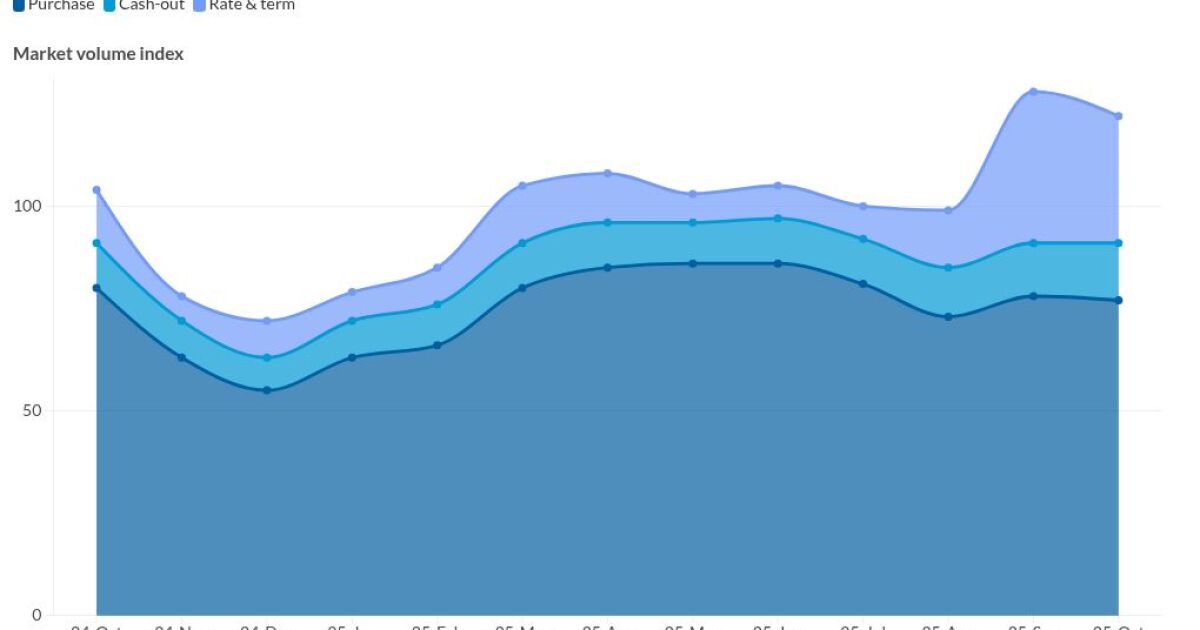
The rate of distressed commercial real estate loans trended upward over the past year, according to two new industry reports, although sizable differences in performance appear when looking at markets, building types or funding sources.
Researchers at Kroll Bond Rating Agency reported distressed loans within private-label commercial-backed mortgage securities climbed up to 6.8%, or $40.7 billion, by the end of August 2023, up from 4.5% at the close of second quarter 2022. The surge represents a net increase of $13.4 billion in delinquencies or specially serviced volumes among CMBS deals issued since 2010.
Loans to retail businesses continued to lead all CRE sectors with a distressed rate of 9.8%, growing from 9.3% in June 2022. Office loans, meanwhile, reported a distressed rate of 8% at the end of last month, seeing the biggest leap in share as the sector continues to feel the impact of hybrid and remote-work policies. The rate just 15 months earlier came in at 2.9%, with outstanding distressed office-sector balances accelerating 59% over that time frame to $13 billion. The latest data comes as several companies, including tech giants Meta and Amazon, signaled their intentions to track employee in-office attendance after Labor Day.
At the same time, mixed-use developments, which sometimes include a sizable number of office and other licensed businesses, also saw its levels of CMBS distress at 7.5%, up from 3% in June 2022.
KBRA's research includes close to $600 million of commercial collateral across its rated bond transactions issued since the Great Financial Crisis. The total comes out to approximately 13% of the $4.5 trillion CRE-debt market.
Similarly, the Mortgage Bankers Association found higher levels of distressed commercial real estate nationally earlier this year, but also noted differences in delinquencies among types of properties or investors in a new commercial/multifamily report issued this week.
"Not all commercial mortgage loans are facing the same pressures. Loans backed by properties, and property types with stable cash flows, are experiencing different prospects than those that may have seen declines in incomes," said Jamie Woodwell, MBA's head of commercial real estate research, in a press release.
Distressed volume for all types of commercial real estate in the 20 largest markets tracked by KBRA exceeded the national average, clocking in at 7.2%, but a wide gap existed between cities. Rates ranged from a high of 22.7% in Chicago to under 1% in San Diego and Seattle, showing the effect of local market dynamics, KBRA said. Eleven of the markets recorded a deterioration in loan performance, with five seeing their rate increase by more than 5%.
Differences in local trends were also noted by the MBA. "Higher and volatile interest rates, uncertainty about property values and stresses in some property markets have increased pressure on some loans and properties," Woodwell said.
CMBS loans delinquent by 30 or more days or in repossession came in at 3.82% at the end of the second quarter based on total unpaid principal balance, according to the trade group's research. The share rose from 3% in the first quarter and 2.95% a year earlier.
Delinquency levels came in more muted across other funding types, according to the MBA's quarterly data, but because each investor group tracks them differently, the figures are not directly comparable from one group to another. All but one, though, saw an increase in the rate of distress.
Commercial properties sourced through banks or thrifts had a 90-day delinquency rate of 0.66%, up from 0.57% three months earlier. But loans backed by life insurance portfolios saw its distressed rate for loans 60 days past due inch down to 0.14% from 0.21% at the end of the first quarter.
Commercial loans at the government-sponsored enterprises also saw greater deterioration in loan performance, with the share behind by more than 60 days rising to 0.37% at Fannie Mae and 0.21% with Freddie Mac. At the end of the first quarter, numbers were at 0.35% and 0.13%.
"Although the uptick in delinquency rates was expected, they remain at the lower end of historical ranges," Woodwell said.
Still, the latest figures come as the financial services industry closely eyes the commercial real estate sector, with worries that a high percentage of defaults might destabilize U.S. banks and the overall economy. Last week, a survey from Moody's Investors Service found some banks may not be fully aware of the risks posed by their CRE portfolios.



